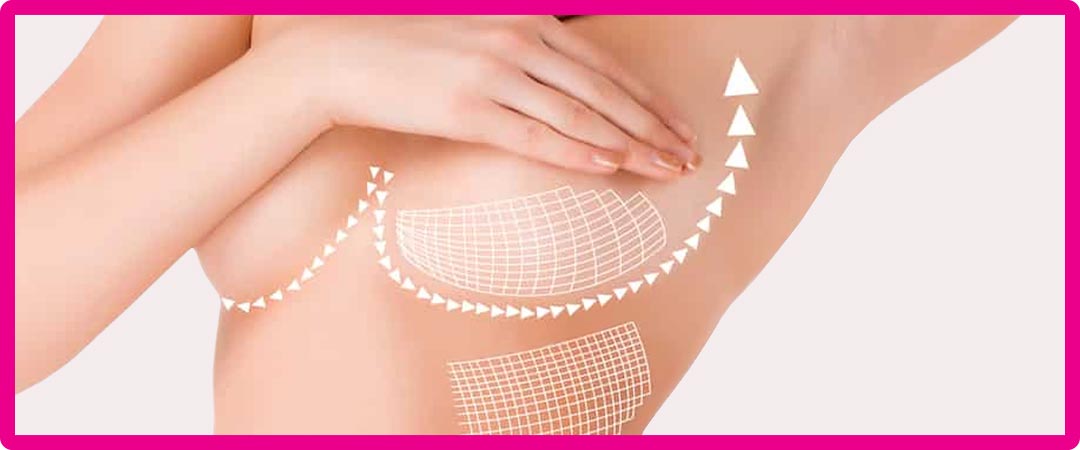Breast Lift Surgery - Mastopexy

Breast Lift Surgery (Mastopexy)
Breast lift surgery addresses deformities in the breasts caused by factors such as childbirth, breastfeeding, weight loss, or gravity, or reshapes naturally sagging breasts that may cause aesthetic concerns. Also known as mastopexy or breast lift surgery, this procedure allows you to achieve breasts that are proportionate to your body and make you feel more comfortable.
During this procedure, the nipples are repositioned to their proper place, the breast tissue is tightened, and excess skin is removed.
Why Is a Breast Lift Performed?
The breast area may become deformed due to ageing and various other factors, leading to a preference for a breast lift procedure. This surgery can be performed to correct sagging caused by significant weight loss. During pregnancy, breast volume increases, which can lead to sagging after childbirth. Breastfeeding can also cause breasts to sag. Additionally, gravity can cause sagging in all women, regardless of whether they have had children. Poorly fitted bras may contribute to sagging and breast asymmetry. Accidents or trauma may also necessitate a breast lift. One breast being naturally or gradually lower than the other is another reason to consider this surgery.
How to Identify Sagging Breasts?
If the nipples are positioned above the breast fold line and face forward or slightly upward, they are in an ideal position. Nipples at or below the fold line indicate sagging.
Who Is Suitable for Breast Lift Surgery?
A breast lift is performed when there is sagging but no significant issue with breast size. Factors such as weight fluctuations, breastfeeding, genetic predispositions, ageing, and gravity can cause sagging, making this surgery appropriate for affected individuals.
This procedure is among the most sought-after aesthetic surgeries and is suitable for adult individuals. Those with naturally small breasts that sag may also wish to undergo this surgery. Flat or sagging breasts can affect clothing choices and posture. A breast lift is also suitable for individuals with downward-facing nipples.
Is There an Age Limit for a Breast Lift?
Breast lift surgery is often performed for middle-aged women experiencing sagging after breastfeeding. However, it can also be performed on younger patients with structural sagging. Like most aesthetic surgeries, breast lift surgery is typically performed after the age of 18, except in exceptional circumstances.
Is a Breast Lift Alone Sufficient?
In some cases, the existing breast tissue is sufficient, eliminating the need for silicone implants. When sagging is accompanied by a lack of breast tissue, the treatment may involve adding silicone implants for volume. If there is excess breast tissue in addition to sagging, a breast reduction surgery may be performed.
Preparations Before Breast Lift Surgery
Before the procedure, breast ultrasounds or mammograms are required. If necessary, an evaluation by a general surgeon may also be conducted.
As with all surgeries, it is recommended to stop smoking at least three weeks before the procedure. Additionally, under your doctor's guidance, avoid blood-thinning medications, painkillers such as aspirin or ibuprofen, and supplements like ginseng, green tea, flaxseed, and cherry stalks for one week prior.
How Is Breast Lift Surgery Performed?
Known as mastopexy, a breast lift procedure begins with detailed evaluations and examinations. The position of the nipple and the degree of sagging are determined. Depending on the patient’s anatomy, the procedure may involve one of two approaches:
- For patients with smaller breasts, silicone implants are placed beneath the breasts to enhance volume while lifting.
- For larger breasts, excess tissue is removed, and symmetry is restored if necessary.
Performed under general anaesthesia, the surgery typically involves a one-day recovery period. However, this may be extended based on the doctor's recommendation. Dissolvable aesthetic sutures are used, which naturally fade over time.
Recovery After Breast Lift Surgery
Patients are usually discharged on the day of surgery, typically six hours after the procedure. The surgery is conducted under general anaesthesia and takes about two hours. Dissolvable sutures are used, so no stitch removal is needed. A wire-free sports bra is recommended post-surgery, especially for the first month.
Annual follow-ups with breast ultrasound or mammograms are advised.
As with any surgery, breast lift procedures come with the risk of complications such as bleeding and infection. These risks can be minimised through proper wound care, hygiene, and adherence to prescribed medications. Important post-surgery guidelines include:
- Avoid showering for the first three days.
- Do not lift your arms above shoulder level for three weeks.
- Avoid lifting heavy objects.
- Refrain from sleeping on your stomach for the first month.
- Light exercises can resume after a month with your doctor’s approval.
- Avoid swimming for at least 40 days. Based on your recovery, you may swim after six weeks.
- Bony bras can be worn six weeks after surgery. Choose comfortable clothing for the chest area.
- Heavy exercise can resume after three months, with regular doctor consultations.
Returning to Routine Activities After Breast Lift Surgery
The surgery typically lasts about two hours. Swelling and bruising may occur for 5–10 days but will gradually subside. A supportive, non-wired bra should be worn for six weeks post-surgery. Most patients return to daily activities within 3–4 days, although arm movements may cause discomfort. Activities like driving can be resumed two weeks later. Full recovery of scars may take up to six months.
It is important to remember that recovery varies based on individual factors.
Disclaimer: The content of this page is for informational purposes only. It does not include therapeutic or health services. For diagnosis and treatment, please consult your physician.
Remember! FeelinHealthy enables you to access accredited, reliable healthcare providers across Europe directly, offering genuine prices without intermediaries.
Related content
Treatments, Health Technologies and Holiday Routes... All on our blog...









